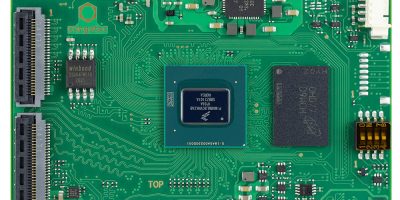Automotive HD Link (AHL) technology from Renesas and OmniVision’s OX01F10 SoC are used in an integrated reference design for automotive camera systems. The two companies have developed the reference design in which AHL technology transmits HD video over low-cost cables and connectors. The AHL components pair with OmniVision’s OX01F10 1.3MP SoC, which is claimed to provide the industry’s best imaging performance across a wide range of challenging lighting conditions. It is also compact and has low power consumption, said OmniVison.
The new RAA279971 AHL encoder and RAA279972 decoder use a modulated analogue signal to transmit the video, enabling transmission rates 10 times less than required to transmit HD signals digitally. The lower transmission rate means that unshielded twisted pair (UTP) cables and standard low-cost connectors can be used, as can existing traditional analogue video cables and connectors.
Renesas added that AHL can be paired with other Renesas products, such as the R-Car Automotive SoCs, RH850 MCUs, automotive PMICs, and analogue components to implement numerous safety features in virtually any vehicle.
OmniVision’s OX01F10 SoC integrates a 3.0 micron image sensor and an image signal processor (ISP) with OmniVision’s PureCel Plus technology for low noise, solving the automotive rear view camera and surround view system challenges of achieving a small form factor with low-light performance, low power and reduced cost while improving reliability by enabling single PCB designs.
The 1.3MP OX01F10 supports HDR up to 120dB and the sensor features ASIL-B.
The reference design will be demonstrated at OmniVision’s booth #15 at AutoSens Brussels 2021 Exhibition, September 15 to 16.
The reference design is available through both Renesas and OmniVision.







